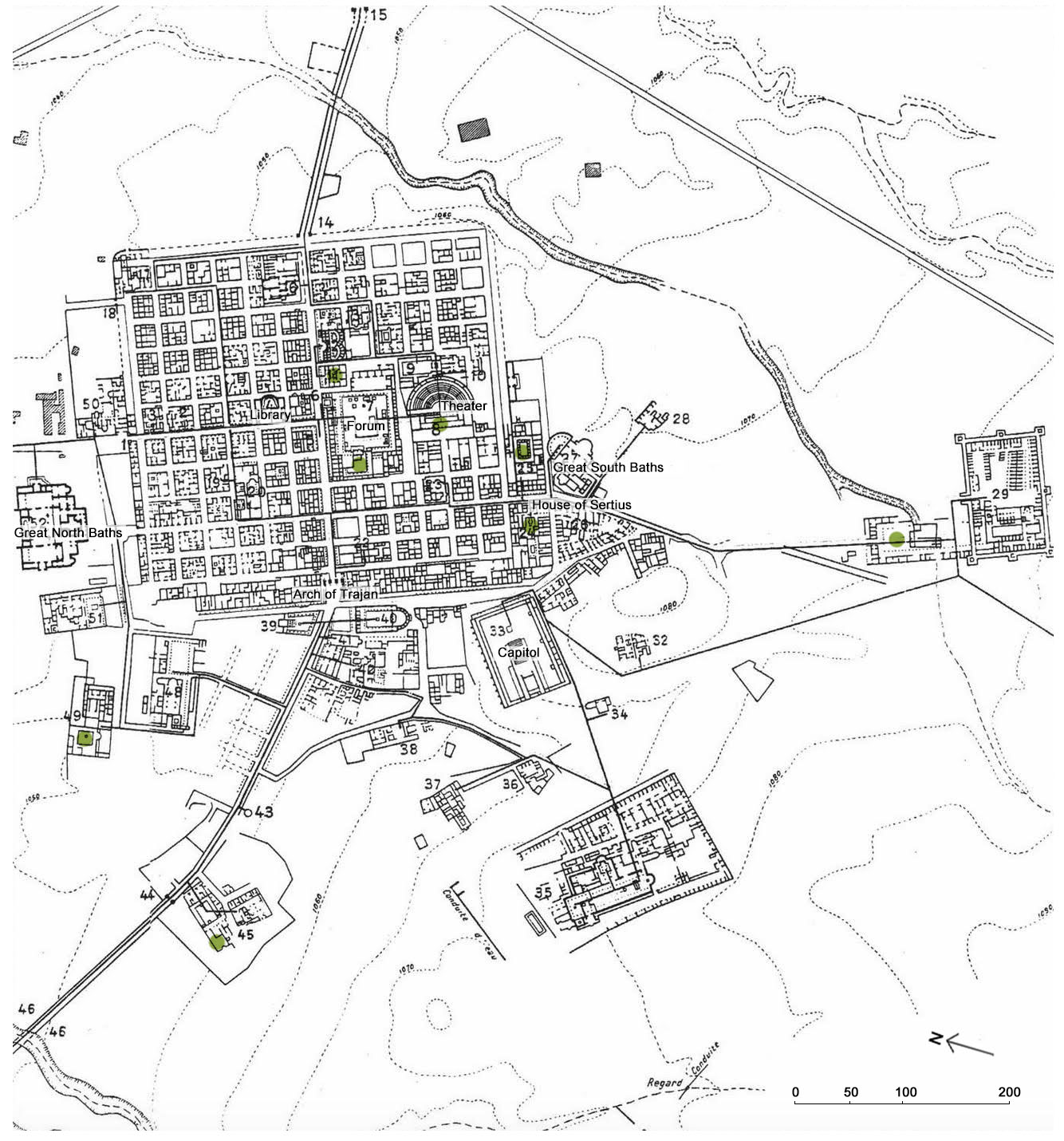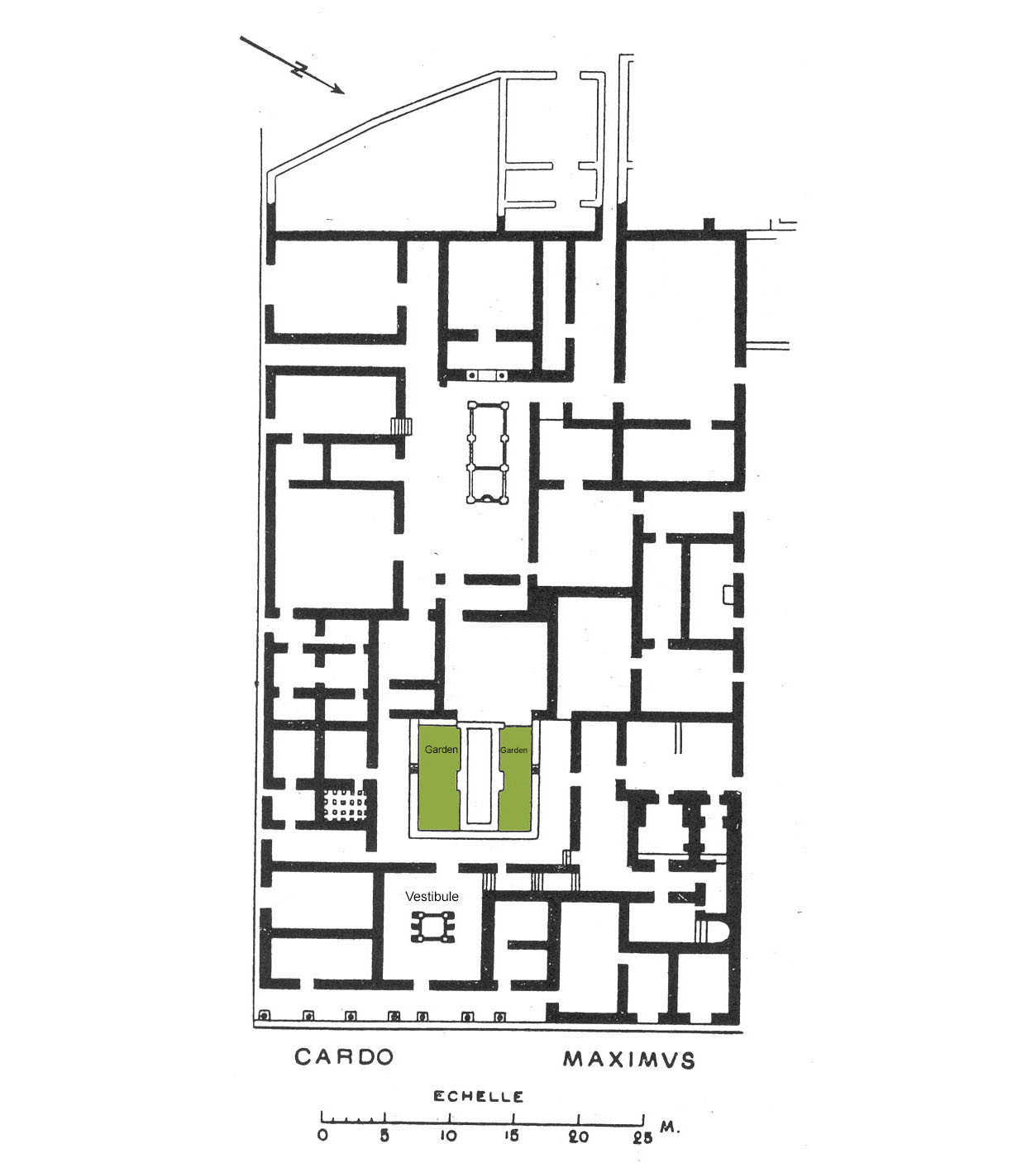House of Sertius (Maison de Sertius)
Province
Province Description
The frontier between Numidia and Mauretania fluctuated during early the African kingdoms. It was fixed at the river of Ampsaga during Caesar’s reign when he rewarded his ally King Bocchus, giving him part of the Numidian kingdom. By 31 BCE, Numidia (also known as Africa Nova) was under direct Roman control, becoming attached to the province of Africa Proconsularis. Toward 194 CE, Septimus Severus detached most of the Numidia territory from the province of Africa Proconsularis, forming a special province governed from Cirta by a procurator, subordinate to the imperial legate. With the Diocletian reforms, the whole of Roman Africa (with exception of Mauretania Tingitana) constituted a single diocese subdivided into six provinces, including Numidia Cirtensis with Cirta as capital.
Location

Fig. 1: Plan of Thamugadi (Courtois, C., 1951)
Location Description
Thamugadi, now known as Timgad, was founded as a colony during by Emperor Trajan around 100 CE. The city had a checker-board plan, measuring approximately 11 hectares (27 acres) total, containing a forum with Curia, an imperial temple, and a basilica. Between the second and fourth centuries, the city expanded from its original layout. Additional temples and baths were built, and the center of the city was expanded with the construction of luxurious houses, a library, and a new market. At the end of the fourth century, bishop Optatus of Timgad, a prominent member of the Donatist church, constructed the great west basilica. During the Byzantine conquest, a fortress was erected on the water sanctuary; the original site dating to the third or fourth century.
Garden
House of Sertius (Maison de Sertius)
Keywords
Garden Description
This large domus the result of the combining of two houses, is located at the periphery of the center of the city. The domus is laid out around two peristyles. The first, near the vestibule had a long rectangular basin placed in the axis of the triclinium, the two strips that bordered the pool may have been planted. The second peristyle with 8 columns had a semi-circular basin (Plan view Fi.1).
Maps
Plans

Fig. 1: Plan of the House of Sertius (Boeswillwald, E., Cagnat, R., Ballu, A., 1905, plan fig. 152)
Images
Dates
3rd-5th century CE?
Bibliography
- Boeswillwald, E., Cagnat, R., Ballu, A., Timgad une cité africaine sous l’Empire romain, Paris, 1905; pp. 326-333, plan fig. 152. (worldcat)
- Courtois, C., Timgad, antique Thamugadi, Paris, 1951, p 53, plan with scale. (worldcat)
- Germain, S. Les mosaïques de Timgad, Paris, 1969, p. 59. (worldcat)
- Lassus, J., "Une opération immobilière à Timgad", in Mélanges d’archéologie et d’histoire offerts à André Piganiol, Paris, 1966, pp. 1221-1231. (worldcat)
Pleiades ID
TGN ID
Contributor
Amina-Aïcha Malek (ORCID: 0000-0002-1628-615X)
Publication date
21 Apr 2021